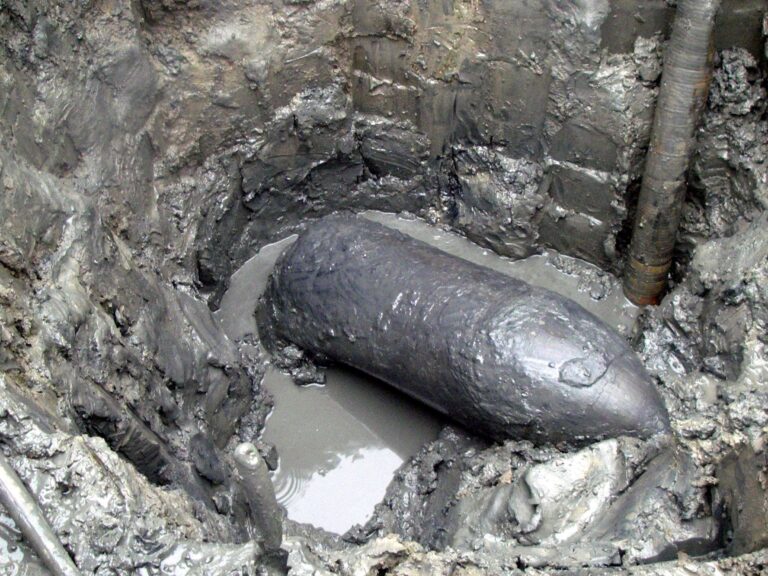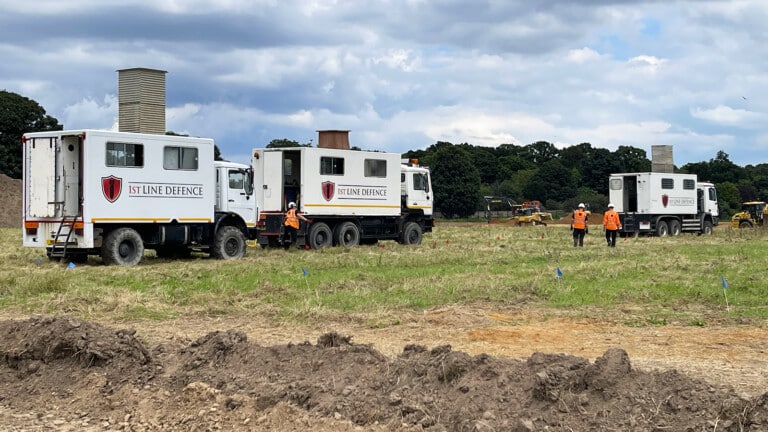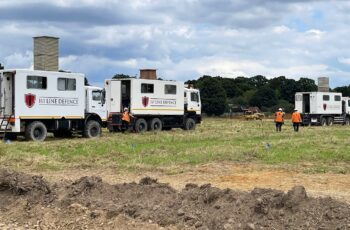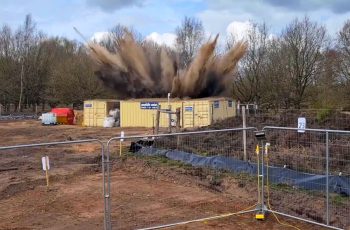If you work in the construction industry, you will most likely have heard of the Construction Industry Research and Information Association or CIRIA.
They are an independent, not-for-profit body at the forefront of the construction industry. Their work addresses industry issues, challenges and opportunities to provide business and delivery improvement.
One unintended outcome from construction activity is that items of Unexploded Ordnance (UXO) are occasionally discovered. When it is, it usually generates considerable media interest and can cause major disruption to the public.
Fortunately, experience shows that the number of casualties resulting from UXO encounter in the UK is low. However, as it is a low probability but high consequence event, appropriate allowance should be made at the design stage for assessing the risk of encountering UXO and for mitigating that risk.
This is where CIRIA C681 comes in to play, with an industry guide for the management of risk associated with UXO.

What rules and legislation is available about UXO risk?
In the UK, surprisingly there is no specific legislation that requires the construction industry to undertake UXO risk mitigation measures before construction or development work begins.
However, clients do have a legal obligation under CDM2015 to provide specific health and safety information needed to identify hazards and risks associated with design and construction work.
Under the Health and Safety at Work Act 1974 every employer must ensure the health and safety of their employees and that of other persons who are affected by their work activity.
Therefore, pre-planning and accessing your site for UXO risk before development works commence is essential to mitigate any potential safety risks.
What guidance is available for the construction industry about UXO risk?
For more information about the risk management process, including best practices, case studies and a detailed guide to UXO risk in the UK – it is recommended that the 2009 document ‘C681 Unexploded Ordnance (UXO) A Guide for the Construction Industry‘ is read and understood.
The principal purpose of this document is to provide the UK construction industry with a set and defined process for the management of risks associated with UXO from WWI and WWII aerial bombardment, and current / historic military activity.
It focuses on the needs of the construction professional if there is a suspected UXO discovery on-site and covers issues such as what to expect from an UXO specialist. 1st Line Defence conform to the recommendations set out in this guide, and our management team were part of the original steering group for this document.
CIRIA C681 was updated in 2019 by a more concise version of the original document – ‘Unexploded ordnance (UXO) risk management guide for land-based projects (C785)‘. The document was part authored by Phil Baptie, Director of Research at 1st Line Defence, and acts as a shorter more accessible handbook for the management of UXO risk on UK construction projects.
What is the CIRIA C681 risk management process?
CIRIA have outlined a four-stage risk management process for constructors to follow, click on the following link to download an overview of the UXO Risk Mitigation Strategy we adhere to – in accordance with C681 Guidelines.
The four stages of CIRIA C681 are:
1. Preliminary UXO Risk Assessment
2. Detailed UXO Risk Assessment
3. UXO Risk Management
4. UXO Support / Implementation
This UXO guidance is focused on WWI and WWII aerial bombardment, though it’s broadly applicable to other variants of UXO.
CIRIA C681 stages
Stage One: Preliminary UXO Risk Assessment>
 Image showing Luftwaffe target photography of Sheffield from WWII.
Image showing Luftwaffe target photography of Sheffield from WWII.
The Preliminary UXO Risk Assessment will investigate any military activity on or near your site to calculate the likelihood of you encountering UXO, it will include a risk rating and any recommended further actions.
We utilise internal and external resources and will deliver an accurate assessment within 24-48 hours from your order, allowing your project to proceed smoothly and safely.
If you require multiple Preliminary UXO Risk Assessments, contact us directly to check whether any discounts are available.
Stage Two: Detailed UXO Risk Assessment>
 Image showing bomb damage mapping of Birmingham during WWII.
Image showing bomb damage mapping of Birmingham during WWII.
If any risk or need for further research is identified during the Preliminary UXO Risk Assessment, we would recommend that a Detailed UXO Risk Assessment is commissioned – which is a comprehensive and in-depth desktop study report which fully examines the history of a project.
This detailed report includes specialist analysis of historical records including bombing maps, previous military use, location history and land use, reports and records of air-delivered bombs, frequency of access, consideration of any mitigating factors plus the extent and nature of proposed construction plans.
If the level of risk is ‘low’, no further action will be required unless future changes are proposed, for example – if deeper foundations and excavation of the site is required at a later date. However, if the risk rating is ‘medium’ or ‘high’, further investigation and action will be required.
Please note: If your site is located on a former military site, you will need to start the UXO risk mitigation process with this type of assessment.
Stage Three: UXO Risk Management>
 Image showing a 500kg unexploded bomb which was unearthed by 1st Line Defence.
Image showing a 500kg unexploded bomb which was unearthed by 1st Line Defence.
If the level of risk on your site has been identified as ‘medium’ or ‘high’, we will provide a UXO risk management plan detailing the services required to address the risk.
If the risk mitigation solution proposed isn’t suitable, you may be required to review development plans, however – in the majority of cases we will be able to identify a suitable solution.
Stage Four: UXO Support / Implementation>
 Image showing 1st Line Defence operatives completing Intrusive UXO Surveys on a project at Orwell in Ipswich.
Image showing 1st Line Defence operatives completing Intrusive UXO Surveys on a project at Orwell in Ipswich.
Once the risk mitigation solution has been approved, we will deploy UXO Specialists to investigate your project – this could involve a Non-intrusive UXO Survey, with drones, carts or towed-array systems used to detect for ferrous metals without breaking ground. Alternatively, we might deploy one of our Intrusive UXO Survey rigs to site, which allows us to clear piles up to 25m beneath the ground and model targets in three dimensions in real-time.
If an item of UXO is encountered, we will need to conduct a thorough identification process and if necessary – amend the risk management plan. If no UXO is encountered during this stage you will receive a verification report stating that the risk has been reduced to as low as reasonably practicable (ALARP), and no further action will be required.
What guidance is available for managing UXO risk on marine developments?
CIRIA have also created a guide for developers working on marine and coastal developments, and it is recommended that the document ‘C754 Assessment and management of Unexploded Ordnance (UXO) risk in the marine environment‘ is read and understood.
This publication provides guidance to organisations involved with the planning, design, delivery, operation and maintenance, decommissioning or regulation of projects in the marine environment on the assessment and management of Unexploded Ordnance (UXO) risks.
The guide focuses on managing risks that might be generated by UXO containing high explosives (HE), including abandoned explosive ordnance (AXO) such as sea-dumped munitions or abandoned ship or aircraft wrecks, but munitions containing chemical warfare agents are outside of its main scope.
For more information about managing UXO risk on marine projects, visit our Marine UXO Services page.
Looking for more info about our UXO Risk Mitigation services?
Need help with UXO risk mitigation? Not sure where to start?
Contact us for more information and we will help and guide you through the process.















